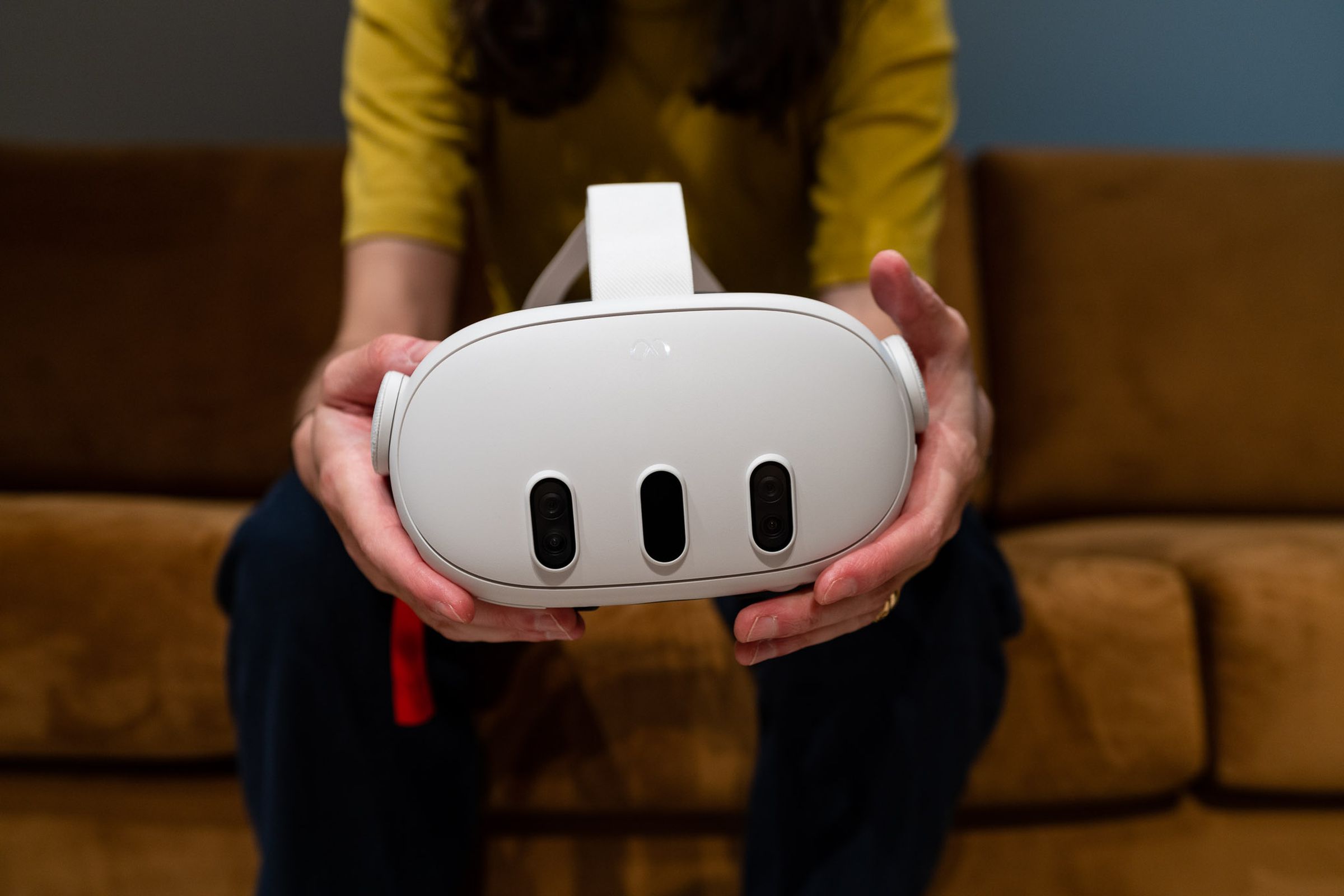Meta has released a new app for the Quest 3, 2, and Pro, letting you use the headsets as a screen for consoles, laptops, or any device with video out capabilities. Using the free Meta Quest HDMI Link app does require additional hardware, but it’s still a relatively cheap way to repurpose the headset, instead of buying single-purpose video glasses that can cost just as much.
In a post shared to the Meta Quest Blog today, the company warns that getting this to work isn’t quite as straightforward as using Air Link, which allows the Quest headsets to stream video from a PC over Wi-Fi. Instead of plugging a PS5, Pixel 9, or even a laptop directly into the Quest’s USB-C port with a cable, you’ll need to add a UVC (USB Video Class) and UAC (USB Audio Class) compatible 1080p capture card to the mix.
These capture cards are now as small as USB flash drives, can cost less than $20 (Note: The Verge hasn’t tested this or any of the offerings currently on Amazon), and typically feature an HDMI port on one end with a USB-A or USB-C connection on the other. Some capture cards even include an extra port for a power adapter, which will allow the Quest to stay charged while it’s connected.
Once the Meta Quest HDMI Link app is installed on a supported Quest headset, you connect a video source device to the capture card’s input using whatever cable is necessary (USB-C to HDMI, Lightning to HDMI, etc.) and then connect that dongle directly to the headset. You’ll also need to “grant the necessary permissions” once the Quest boots up, but after that, the video from the connected device can be viewed with “near-zero latency” on a floating resizable screen.
Resolution will be limited to 1080p at 60fps, but the app allows the Quest to provide a big screen experience without a projector or to have the video feed positioned in a smaller window alongside other apps. Future versions of the Quest headset could offer similar built-in functionality by natively supporting standards like DisplayPort over USB-C, but the dongle approach is an easy way to bring this functionality to existing hardware.

Leave a Reply